©2022 Bardot Brush by Lisa Bardot // All Rights Reserved
Welcome to Character Camp! Character Camp is a series of prompts, guides, and tutorials to help you design and draw your own original characters. This series was created in conjunction with the Making Art Everyday challenge. Each day for five weeks, we’ll have a different prompt to get you learning how to draw characters. We’ll be exploring human characters, animals and creatures, even inanimate objects as characters. This page will be updated throughout the month, so be sure to check back!
For this first week, we are focusing on drawing a single, human character. To ease into things, and to get you thinking about what goes into developing a character, we’re going to build our characters one piece at a time.
Spend the first day defining your character and what makes them unique. Create a profile determining their physical apperance and personality. Take notes and make doodles! The more you know about your character, the better. This information will help you determine how your character looks and behaves.
Read my article, How to Develop a Character for info about what makes a good character and questions to answer about your character for their profile.

Draw the clothes that your character might wear. Don’t worry about drawing them on a body, draw them flat like they’re laying on the ground. Keep it easy, this is meany to be a brainstorm of what clothes you think this character might wear. Finish with color to start getting an idea of a color palette for your character.


What accessories might this character wear or carry? Use what you know about your character to guide you. Think back to their story, where they live, and the things they want to do. It’s all fair game: hats, shoes, glasses, props, scarves, hair accessories, maybe even a little animal friend!

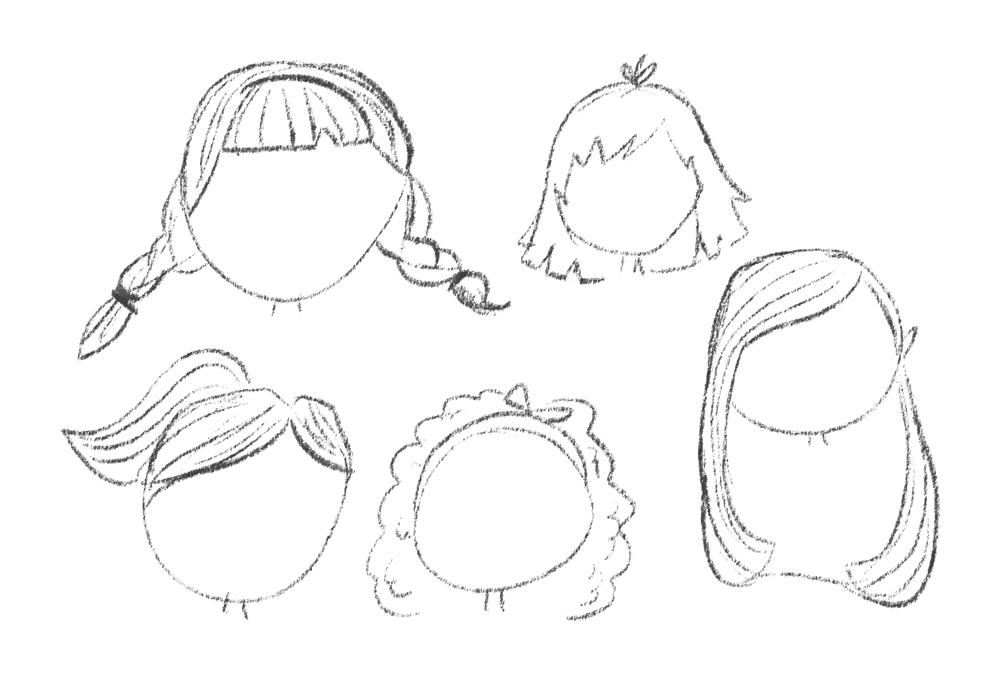
Hair is a character all in itself! Try sketching a few hairdos before landing on the one that feels right for your character. Finish it in full color to practice hair texture. See my People Skills lesson on drawing hair for extra help!


It’s time for one of the most essential parts of your character, it’s face! Think about how you want to depict each of the facial features: eyes, nose, mouth, ears, etc. Are there any unique features such as freckles, a scar, a missing tooth, facial hair, etc? Remember to make your character unique! Play around with different styles and proportions of features and decide which you’ll use for your character.


Experiment with different body proportions to determine your character’s body shape. Draw the body shape without any details added. Remember to exaggerate features for extra interest!
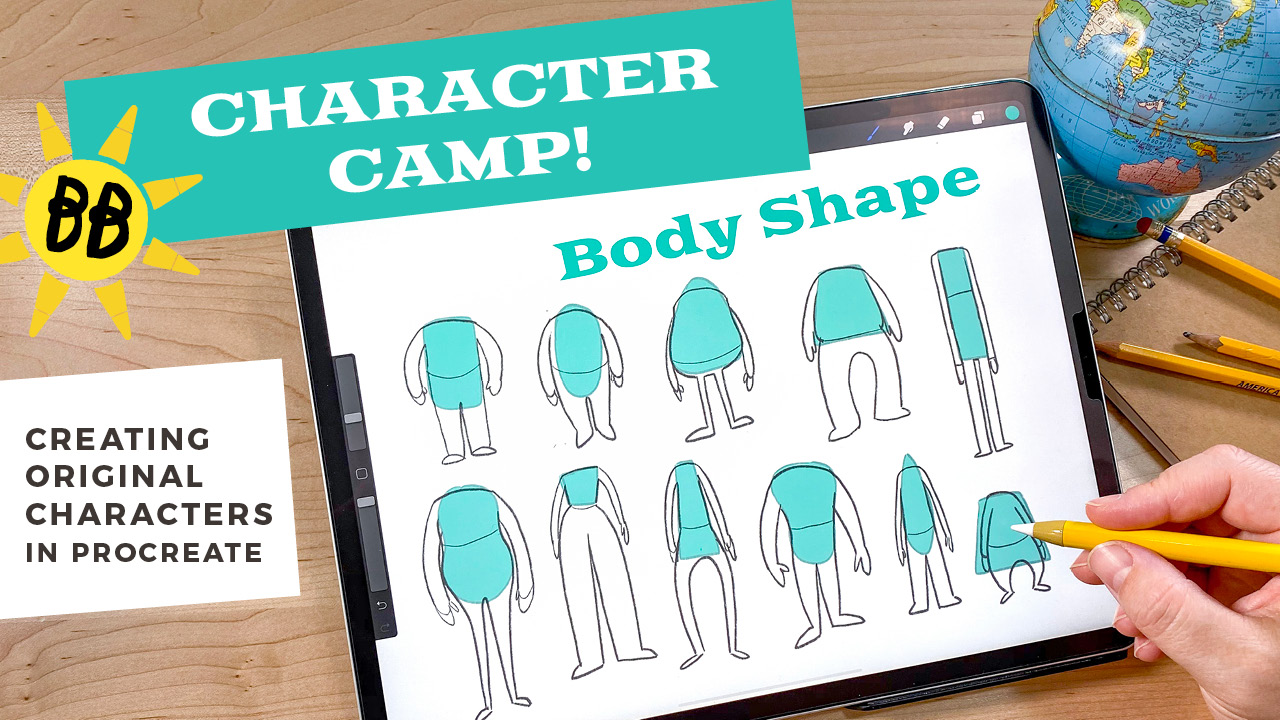

Today’s the day! We’ll be putting all the pieces together: the body, the head and face, hair, clothing, and accessories. Don’t worry about creating a dynamic pose for your character just yet; opt for a neutral standing position. This is your finished piece: be sure to finish the drawing completely with color, shading, and texture.
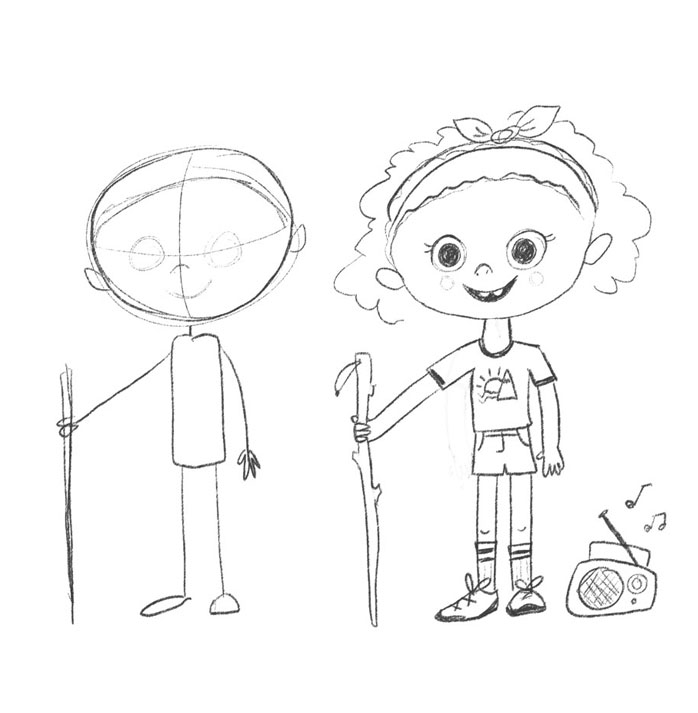

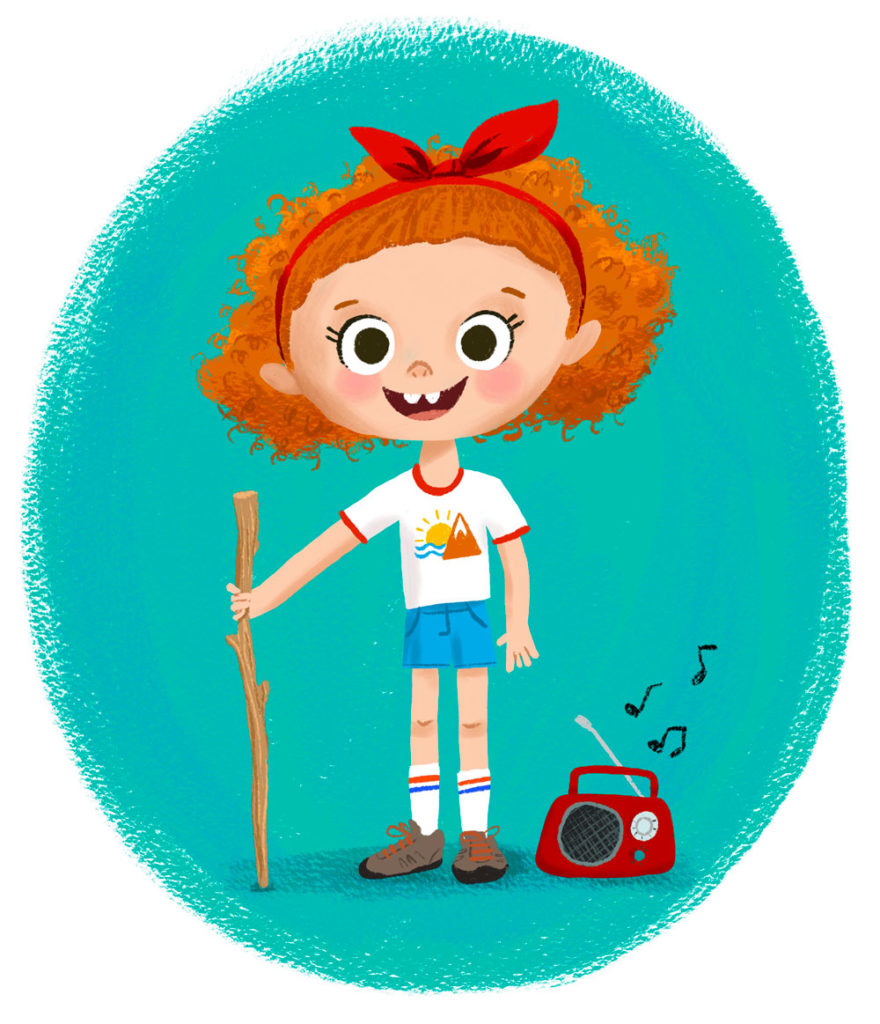
This could be by giving it personality traits, outfitting it in clothing and accessories, by making the facial features more exaggerated and expressive, adapting the way it physically moves, or a combination of these! The point is to humanize the animal. And don’t forget to employ some level of stylization in your animal. And don’t forget to employ some level of stylization in your animal. Hyper-realism doesn’t work so well in animal characters.

Mon: cat
Tue: bear
Wed: mermaid/man
Thu: duck
Fri: mouse
Sat: monster
Sun: artist’s choice!
Animals: dog, crab, pigeon, dinosaur, raccoon, flamingo, earthworm, bird, rabbit, chameleon, hippo, sloth.
Creatures: fairy, unicorn, dragon, gnome, ghost, skeleton, yeti, troll, vampire, zombie.
Draw each of the prompts, one per day. This will be an exercise in quick thinking and idea generation. Don’t worry about getting too detailed with your drawings — think of it as a character brainstorm. For each of the animal or creature prompts, think of a way you could characterize them. You can do this in several ways. You could draw the animal in a more human-like pose, or you can depict them performing an action. You can add some clothing or fun accessories. Give them a personality trait. Depict them portraying an emotion. Check out this People Skills tutorial about manipulating the facial features to convey different emotions.
Choose one animal or creature to develop fully as a character using the methods we employed in last week’s Build-A-Character. Pick an animal from the prompt list. Write a profile for the character, then progress each day, designing your character’s clothing, accessories, facial features, hair (or in this case, the texture and coloring of it’s fur/feather/scales/etc.), body shape, and finally, putting it all together. Depending on how much time you have this week, try doing a couple of characters!
This week we are creating characters from inanimate objects. An inanimate object is not living, cannot move on its own, or have emotions and desires. SO there is lots of room for you, the artist, to dream up what all these things might be. Essentially, you are inventing a whole universe! That might sound intense, but I promise, it’s actually a lot of fun.
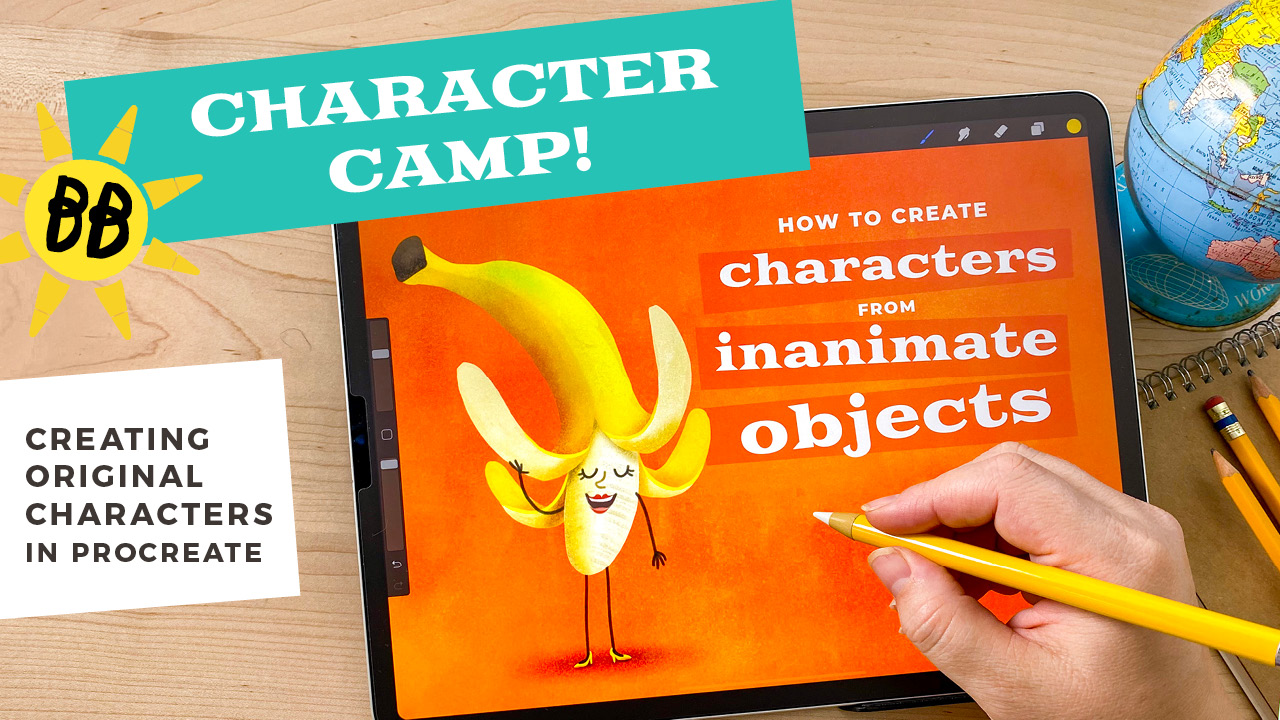
Monday: Kitchen Utensil // ex. Fork, spatula, egg beater, cheese grater
Tuesday: Some type of ball // ex. bowling ball, beach ball, bouncy ball, ball of yarn
Wednesday: Writing or drawing implement // ex. Pencil, pen, highlighter, paintbrush
Thursday: Food item // ex. vegetable or piece of fruit, pizza slice, ice cream cone
Friday: A plant // ex. Houseplant, tree, flower, mushroom
Saturday: Musical instrument // ex. guitar, tuba, flute, drum
Sunday: Artist’s choice!
There are a few key things to know that will make it really easy to have the character you are drawing come across as a child or an adult. For this week, I’ve put together a video tutorial that teaches you how to manipulate facial and body proportions to draw characters at different ages, from infant to elderly.


1. On Day 1, practice how to age a face by following along in the How to Draw Characters at Different Ages tutorial. Just do some sketches of a simple face from infant to elderly to get yourself familiar with how to draw the different ages.
2. For the rest of the week, choose a favorite character that you designed earlier this month. It can be a human character, animal, or inanimate object.
3. Spend each day drawing THAT CHARACTER at the different ages. Get creative with your character’s outfit for each age, activities it might be doing, etc. Have fun imagining your character’s life!
Monday: age-a-face
Tuesday: baby
Wednesday: kid
Thursday: teen
Friday: adult
Saturday: middle-age
Sunday: elderly








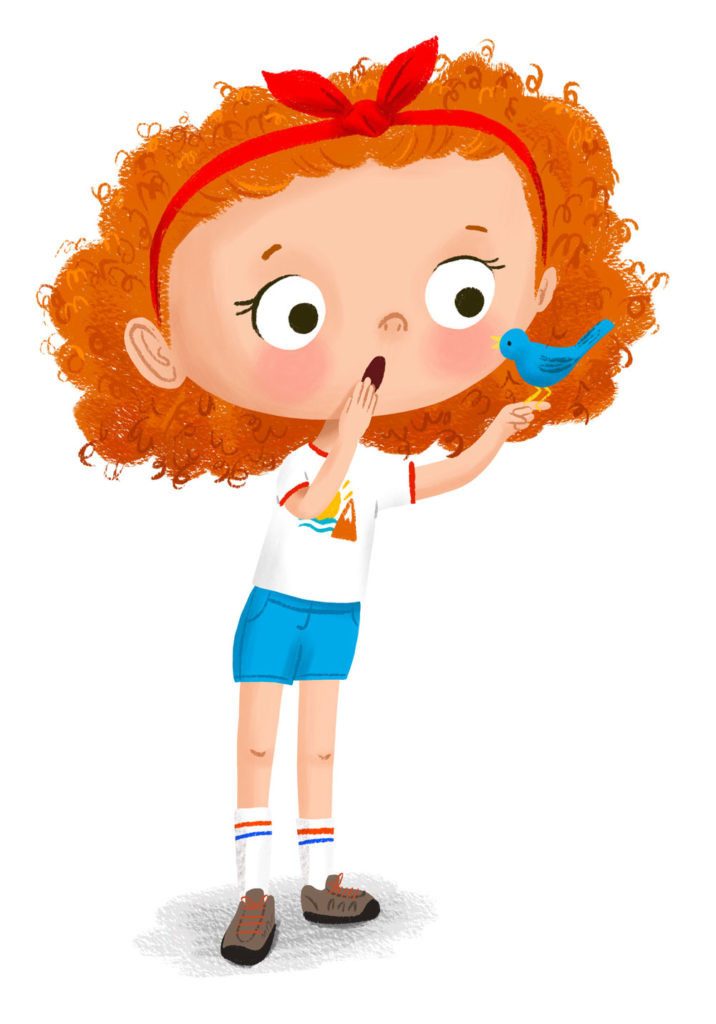
We’ll stock your inbox with Procreate tips, new releases, and free goodies!
Bardot Brush was created by California-based illustration artist, teacher, and all-around creative person, Lisa Bardot.

©2022 Bardot Brush by Lisa Bardot // All Rights Reserved